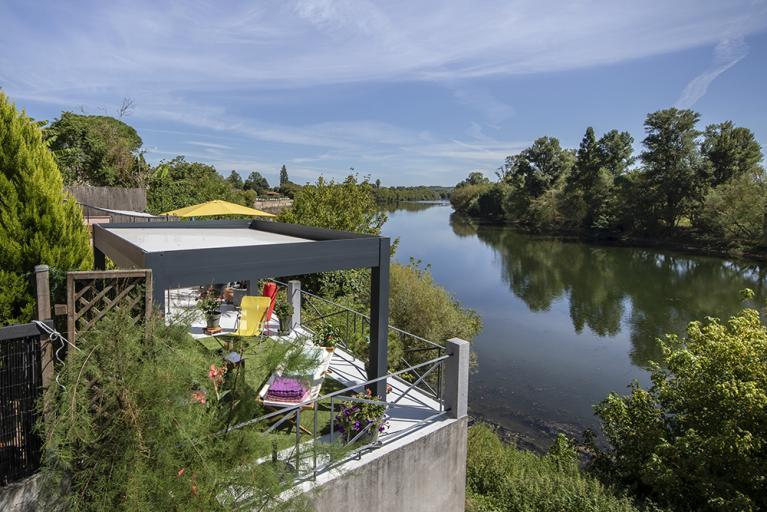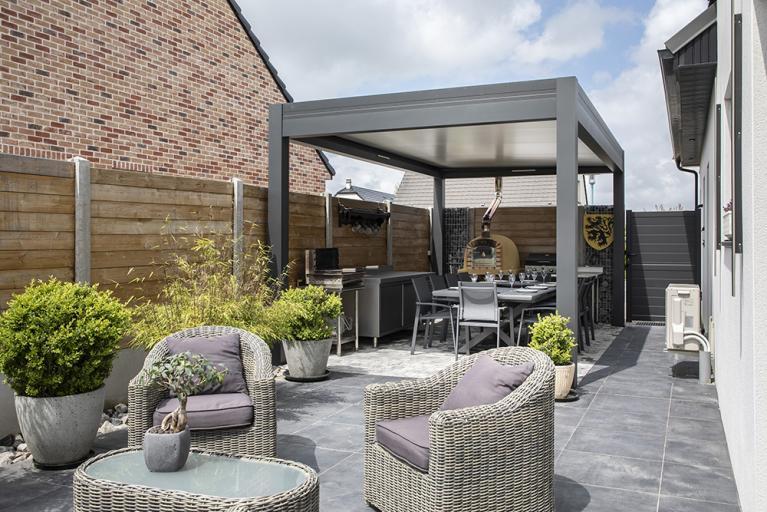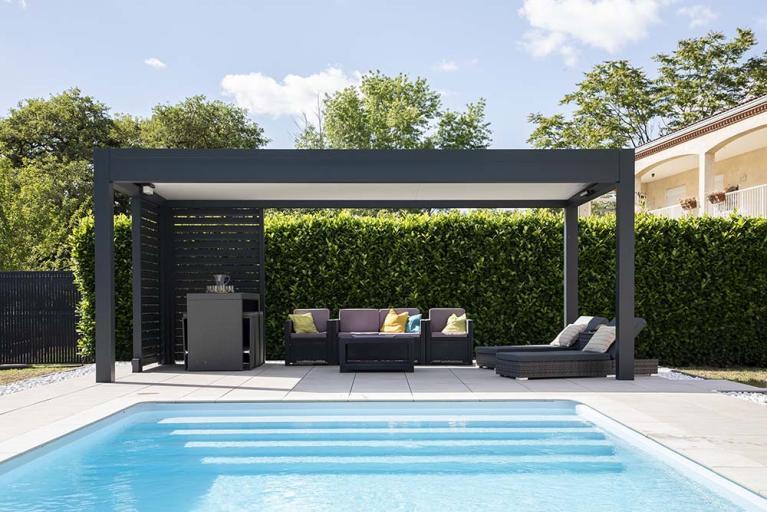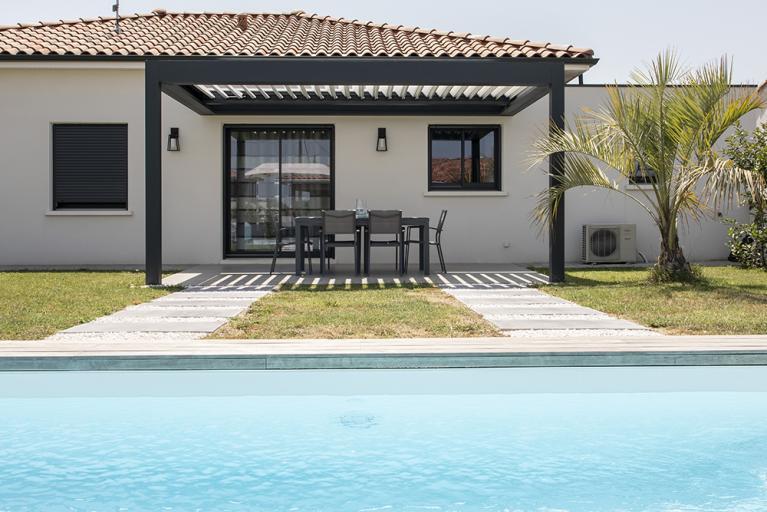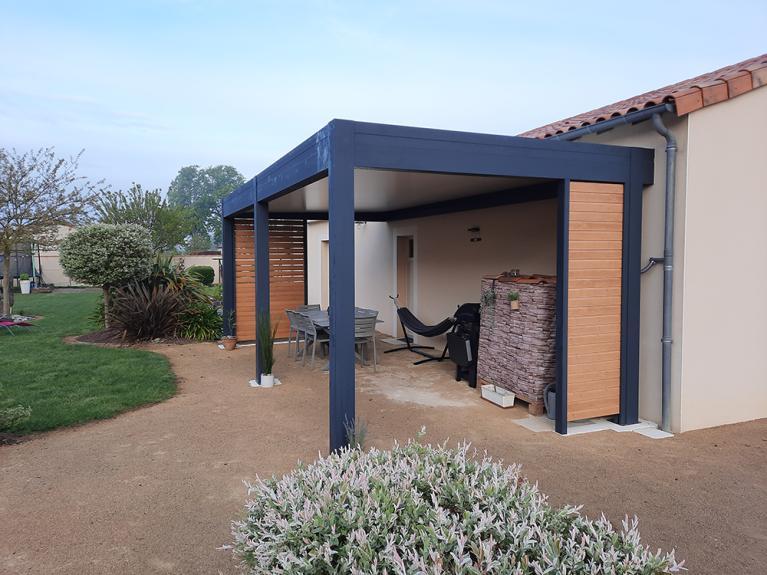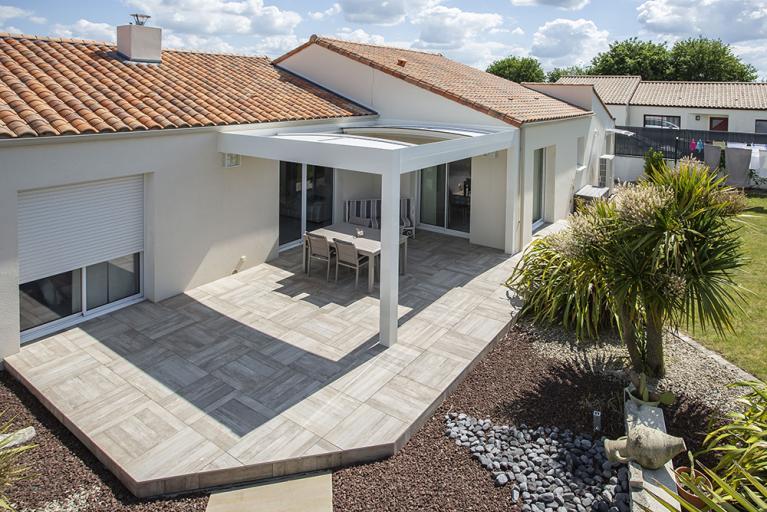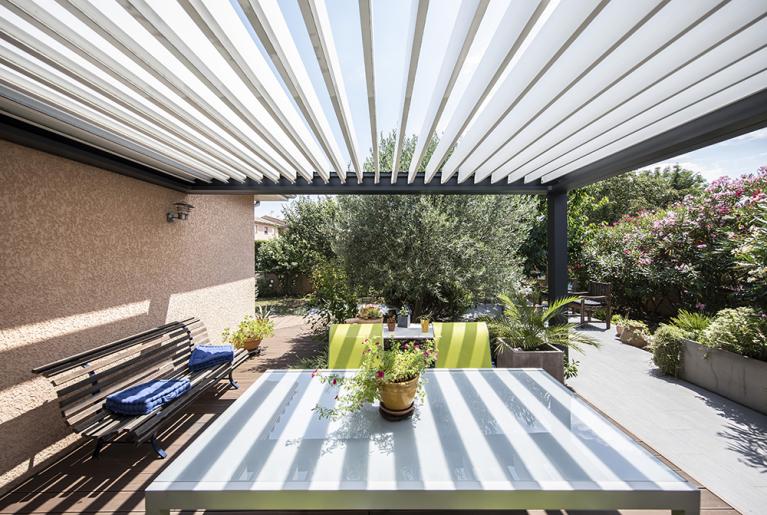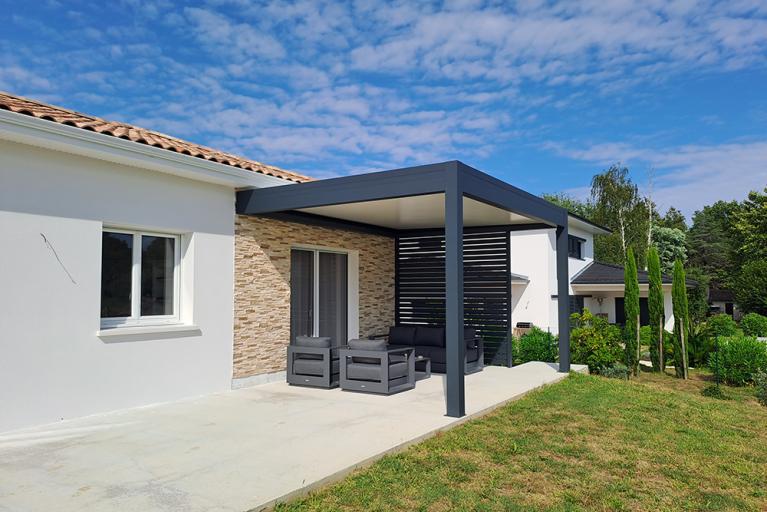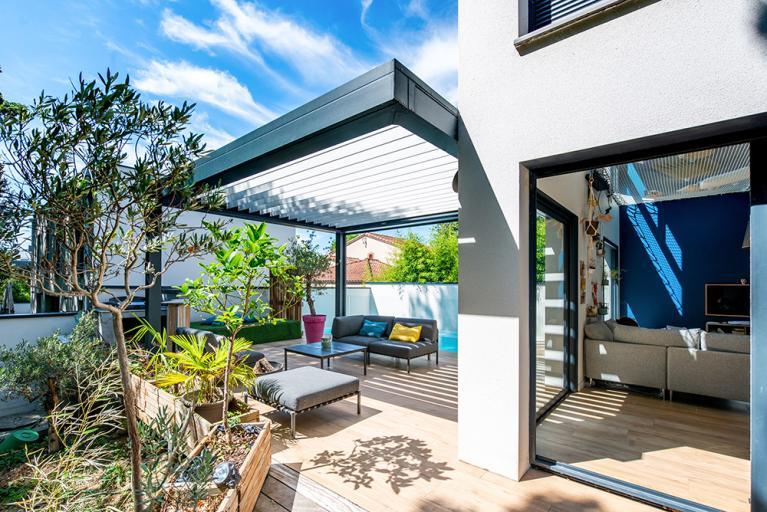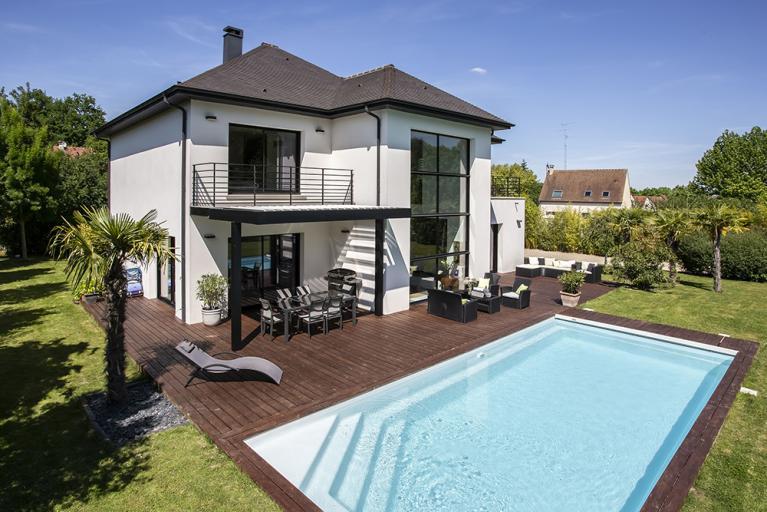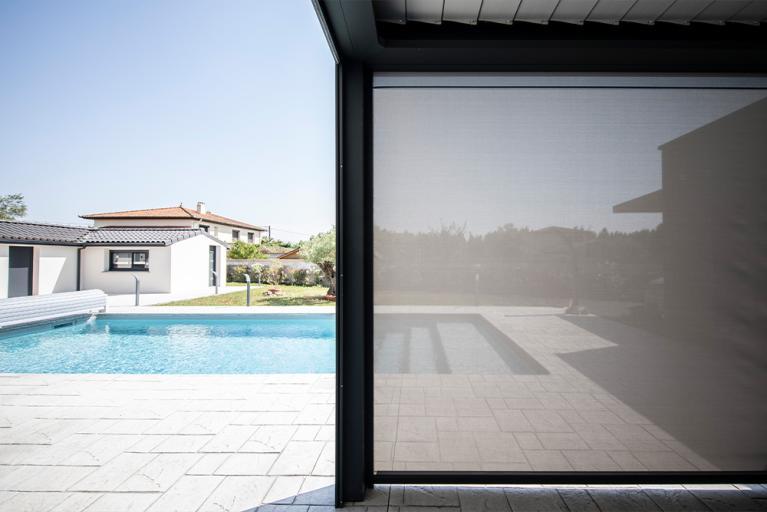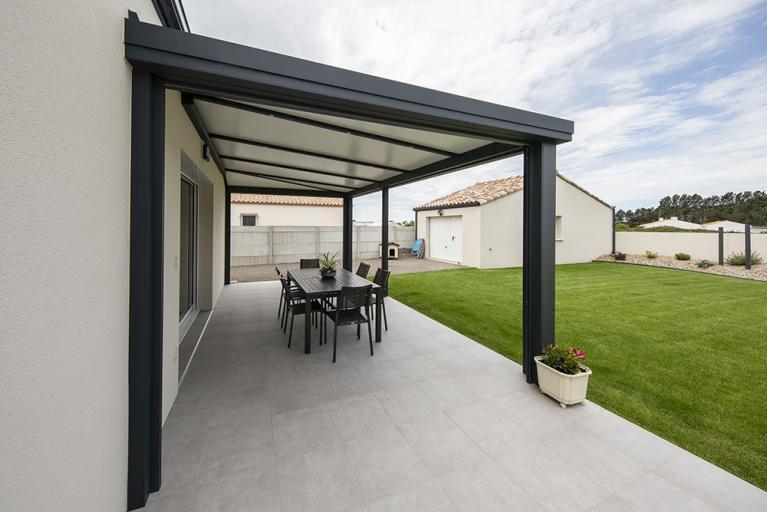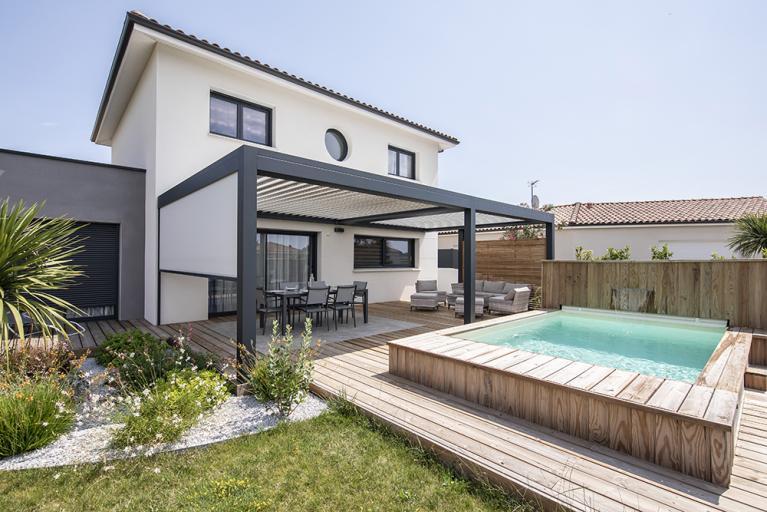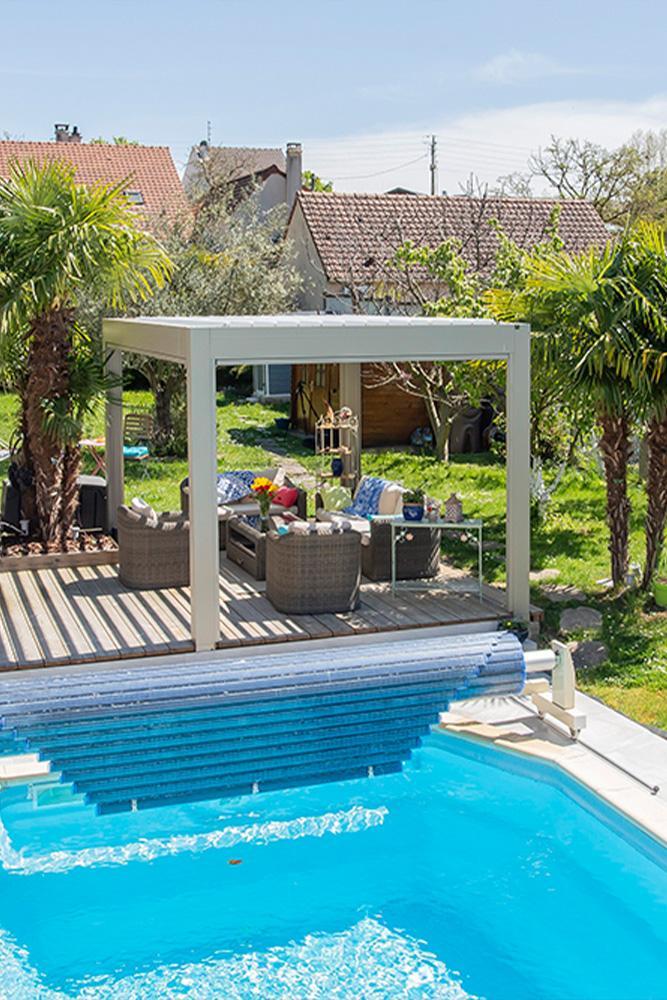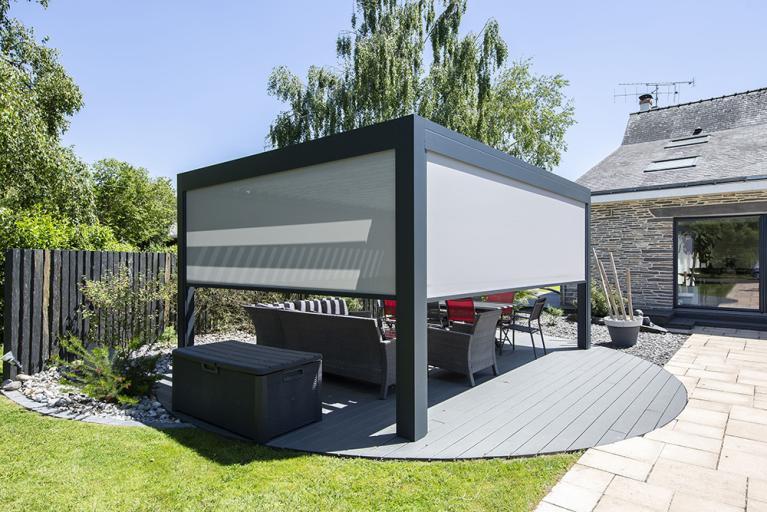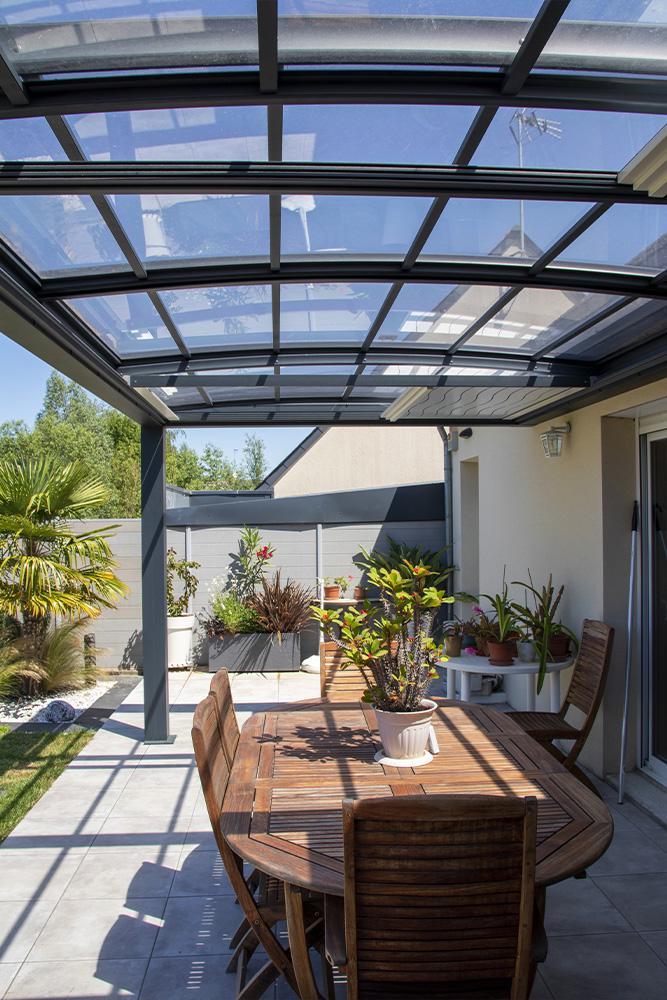Bioclimatic pergola or awning: how to choose?
It's not always easy to decide between an awning and a bioclimatic pergola. Although these two structures have similarities, they also have specific features that make it easier to choose. Here's our advice on making the right choice.
Awning: a fixed structure with certain limitations
Like the bioclimatic pergola, an awning provides shelter for an outdoor terrace. Taking the form of a small overhanging roof, this installation provides protection from the elements, while being open at the sides. All in all, it offers the same advantages as a lean-to pergola: a designer structure, a sheltered space and an open outlook. Despite this, the awning has one major drawback: its fixed roof. Whether it's fitted with reed screening, PVC sheets or even a canvas, the cover can't be adjusted. The consequences? Light levels can't be adjusted, limiting the possibilities offered by this outdoor space.
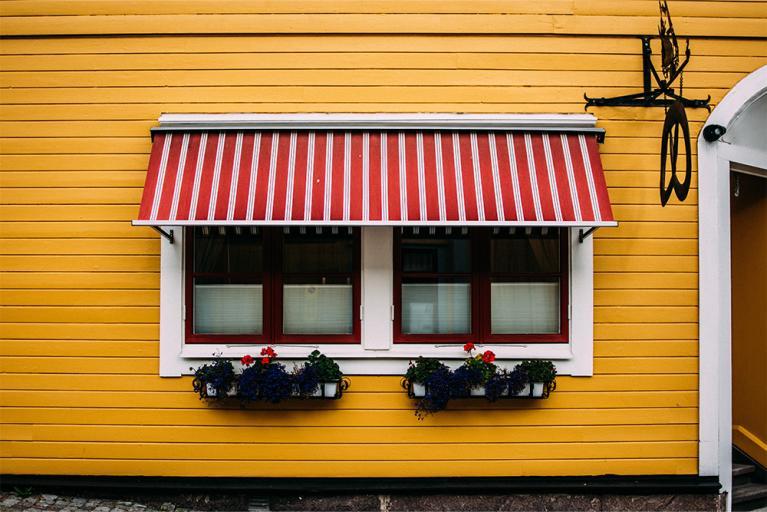
Bioclimatic pergola: a more versatile installation
Unlike an awning, a bioclimatic pergola has a modular roof. Equipped with adjustable slats, this system makes it easy to regulate incoming light. Using a crank handle, or a remote control for motorised models, you can open and close the slats to let the light in or keep the shade out. The bioclimatic aluminium pergola can even be linked to a weather station. In this way, the slats will open and close automatically, without any human intervention, depending on the weather. This is an even better way to enjoy the outdoors, especially as the bioclimatic pergola can be fitted with a range of equipment: heating, misting, side panels and lighting. All of which adds to the comfort of the occupants and creates a real extension of the house.
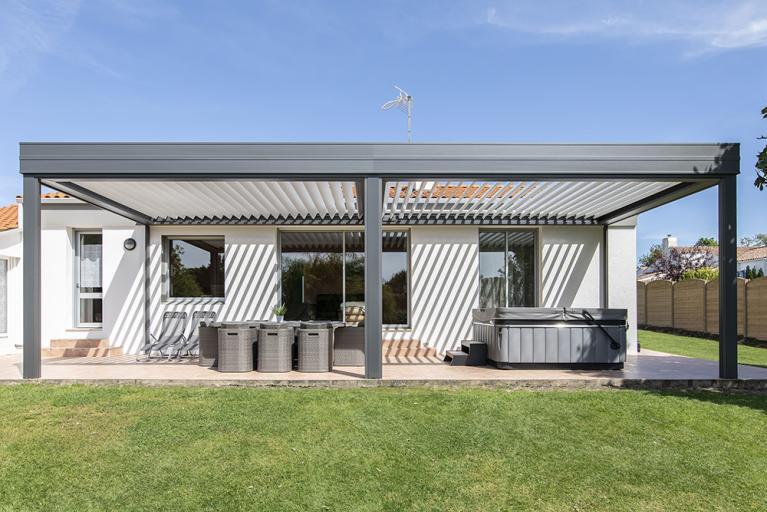
Discover our achievements
Read all the articles in the magazine
You have a project?
Would you like a personalised 3D study and a free quotation? Contact us by clicking below.
AKENA is...
Over 40 years of experience
Founded in 1981 by one man, we now have more than 500 employees dedicated to making your project a success.
Made in France
A historic site and two factories covering more than 25,000 m² in Dompierre-sur-Yon in the Vendée region (85)
Innovative and tailor-made products
At AKENA, we are brimming with new ideas to improve and enhance our products.
The European leader in conservatories, pergolas...
But not only! AKENA also offers a complete range of carports and pool houses.
